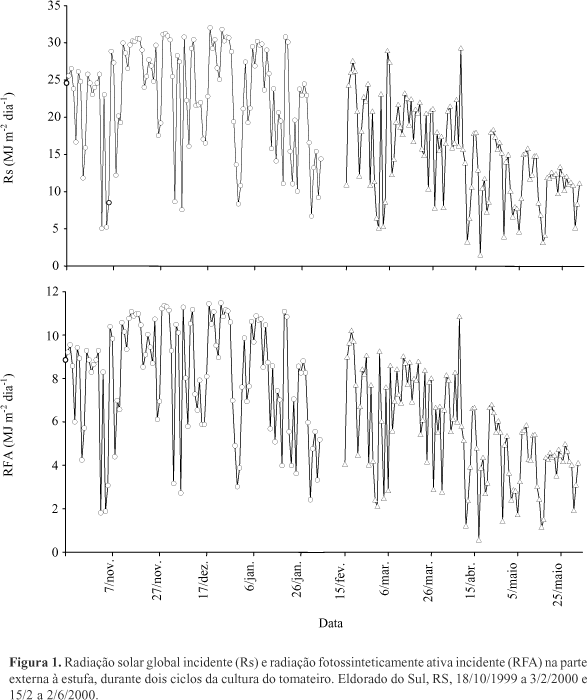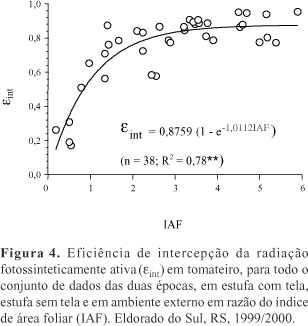Crop biomass production is related to the amount of photosynthetically active radiation intercepted and absorbed by the leaves, as well as to their efficiency of conversion of this radiant energy into chemical energy through photosynthesis. The objective of this study was to evaluate the radiation use efficiency by tomato plants (Lycopersicon esculentum Mill.) grown in different environments. Experiments were carried out in plastic-covered greenhouses with and without antiinsects screens and at open air plots, in different growth periods (spring-summer and summer-autumn) during the 1999/2000 crop season. Measurements of dry above-ground biomass and leaf area index throughout both crop cycles were performed, and the incident and transmitted radiation fluxes were registered. The greenhouse with antiinsects screens had less incident radiation, but resulted in higher use efficiency: 0.44 and 0.60 g dry matter mol-1 during the first and second cycles, respectively. Outside the greenhouses, there was a higher amount of incident radiation, however a lower use efficiency (0.30 and 0.32 g mol-1 for the first and second cycles, respectively), while the greenhouse without antiinsects screens had intermediate values (0.45 and 0.53 g mol-1).
Lycopersicon esculentum; solar radiation; greenhouses; protected cultivation











